- Male, Muttaburra, Queensland
- Nest, Muttaburra, Queensland
- Male, Hamelin Pool, WA
- Female, Hamelin Pool, WA
- Female, Hamelin Pool, WA
- Nest in tree, Hamelin Pool WA
- Nest
- Nest closeup
The Foliage webbing spider Phryganoporus candidus is a social spider only found Australia, where it is found in all states and territories including Norfolk Island. It is up to 10 mm long, silvery grey to brown with a pattern of light and dark brown markings on the abdomen, the male pattern more distinct. This species lives socially in a nest built on foliage. The males may stay into the adult stage, while females tend to leave earlier. This communal nest has an inner retreat area, many entrance holes opening into a network of interconnecting passages and an outer area made out of cribellate silk for prey capture. In extreme cases a single nest can house more than 600 spiders. Nests of this size attract many arthropod parasites. The species name is derived from Latin candidus "shining white", referring to the color of the legs. (Gray 2002) Most webs are founded in late summer by solitary subadult females. By October- November, at the peak of colony growth, each nest usually has about 100 spiders, along with an associated opportunist scavengers and predators. Communal interaction is probably a consequence of pheromone mediated sibling tolerance rather than true cooperative behaviour. Subadults males and females are less tolerant of each other than younger animals. The females, maturing faster than the males, tend to dispersed over summer, most as subadults. Adult males do not appear in the nest until most of the females had dispersed. By March, old nests are largely unoccupied. (Downes 1993, 1994)
Male, Muttaburra, Queensland
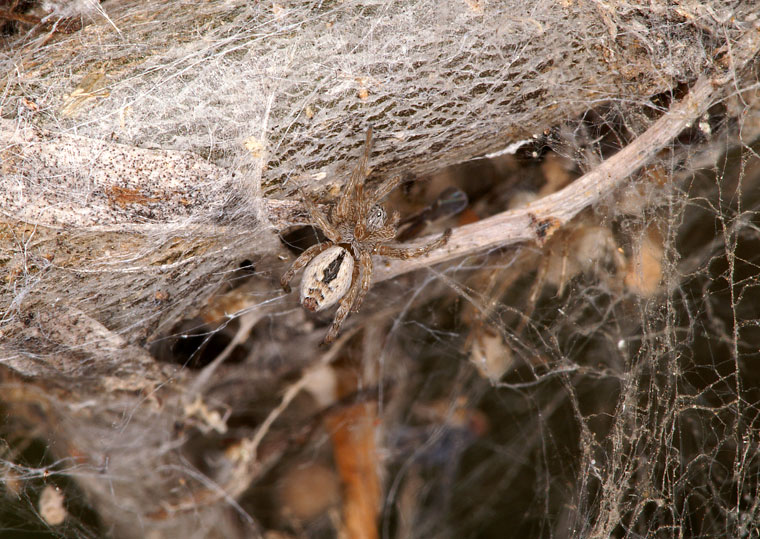
Nest, Muttaburra, Queensland
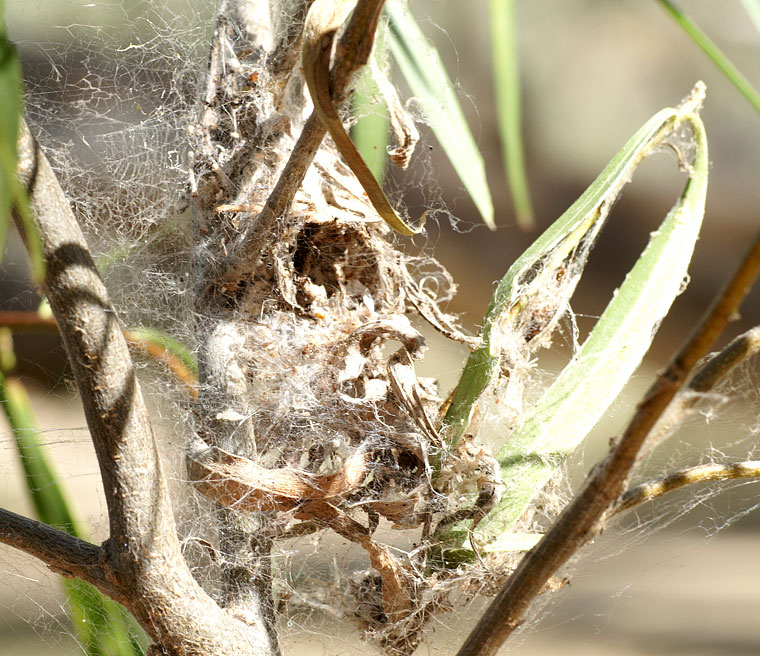
Male, Hamelin Pool, WA
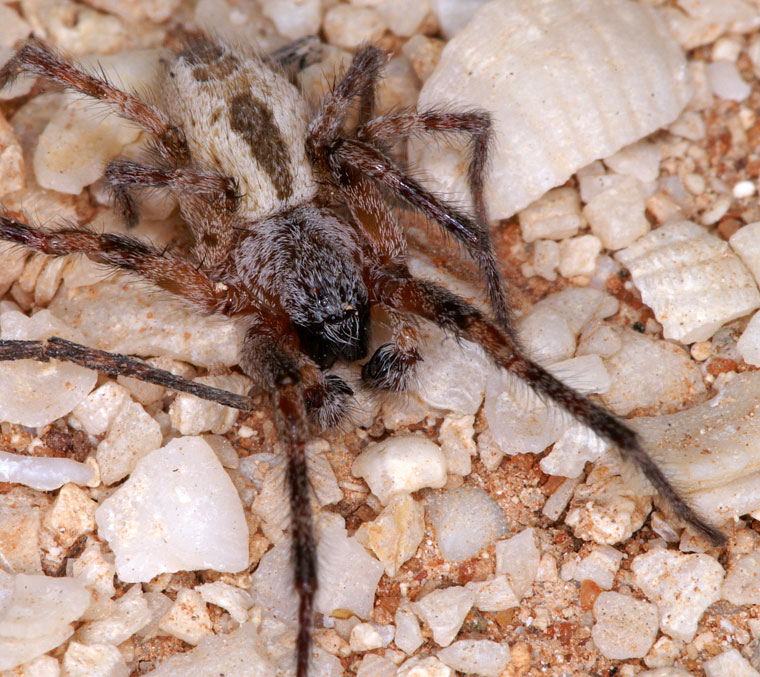
Female, Hamelin Pool, WA
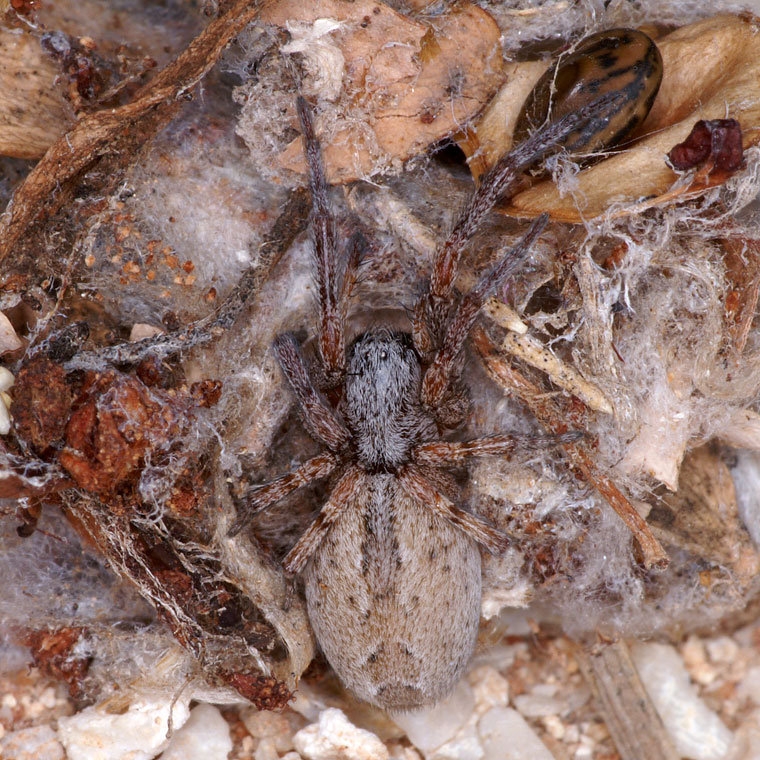
Female, Hamelin Pool, WA
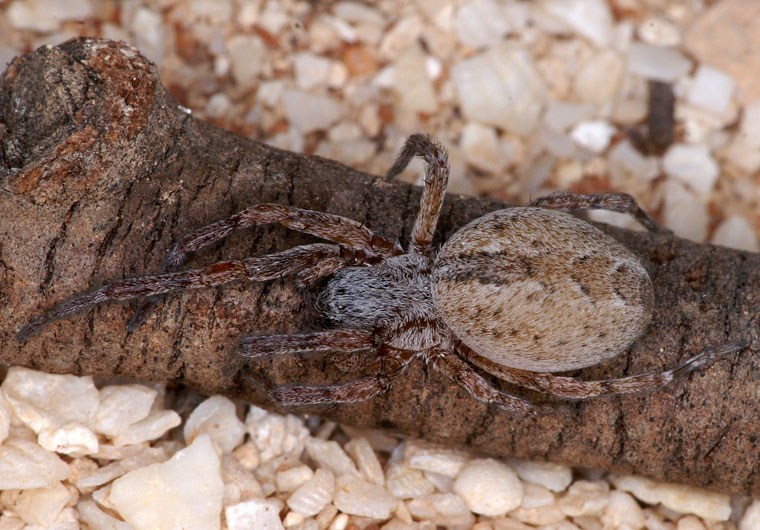
Nest in tree, Hamelin Pool WA
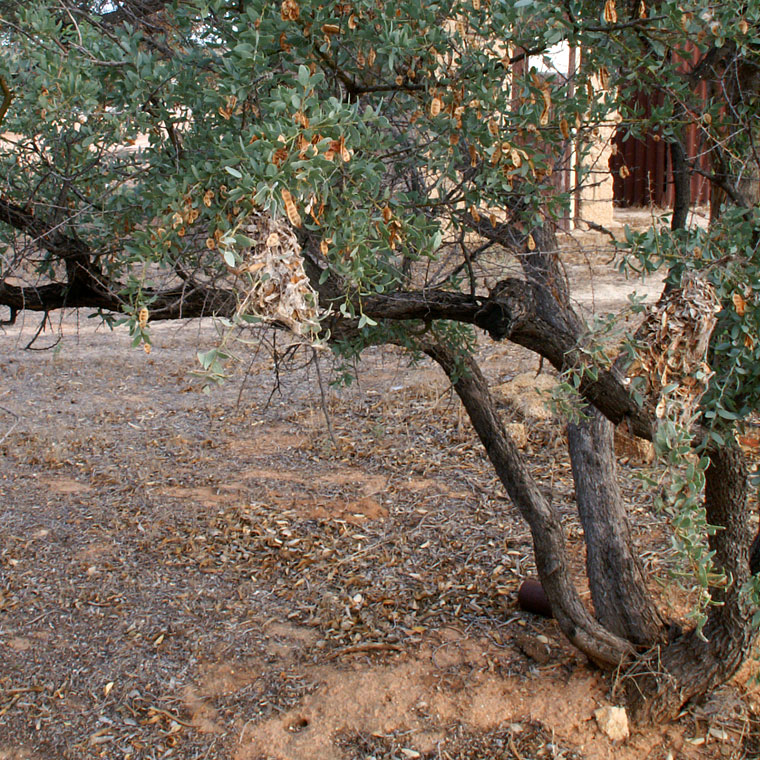
Nest
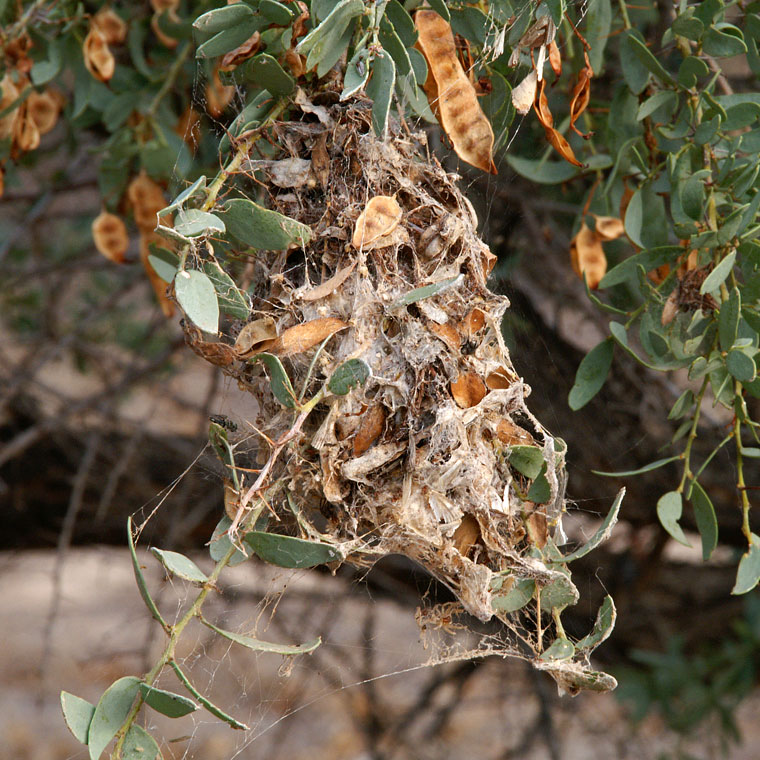
Nest closeup
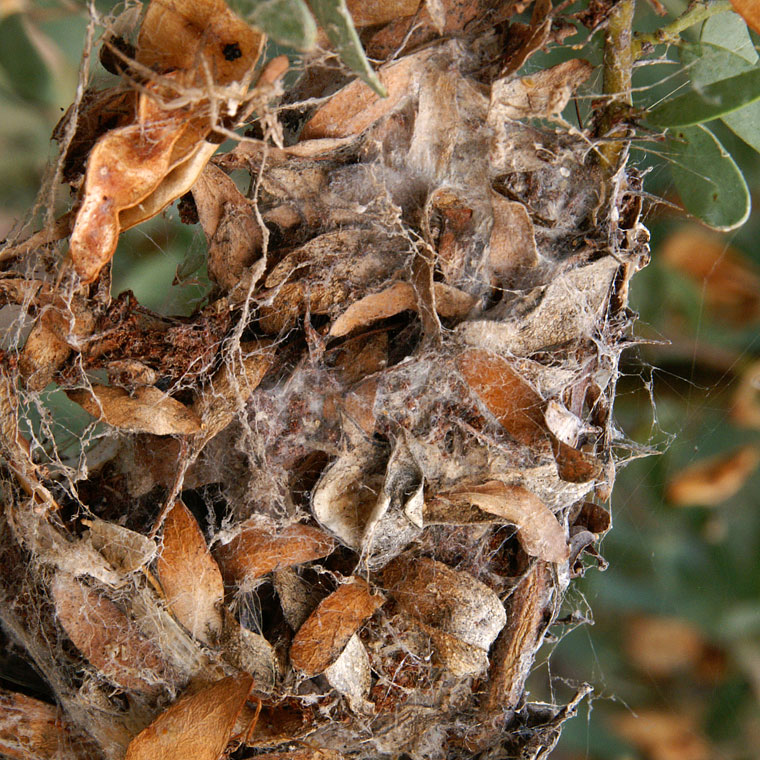
- Gray 2002 - Records of the Australian Museum (2002) Vol. 54: 275-292. ISSN 0067-1975 The Taxonomy and Distribution of the Spider Genus Phryganoporus Simon (Araneae: Amaurobioidea: Desidae) Michael R. Gray